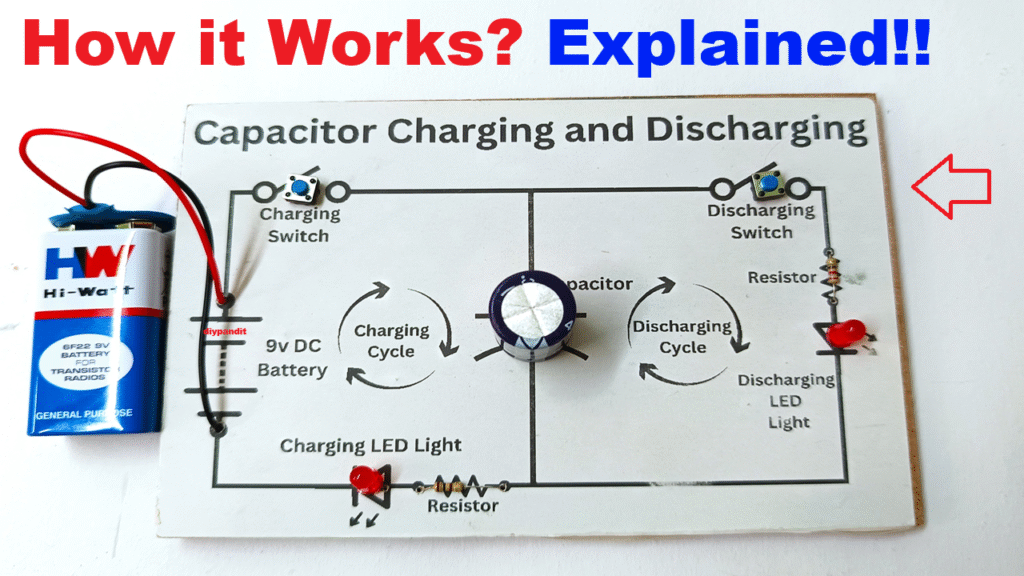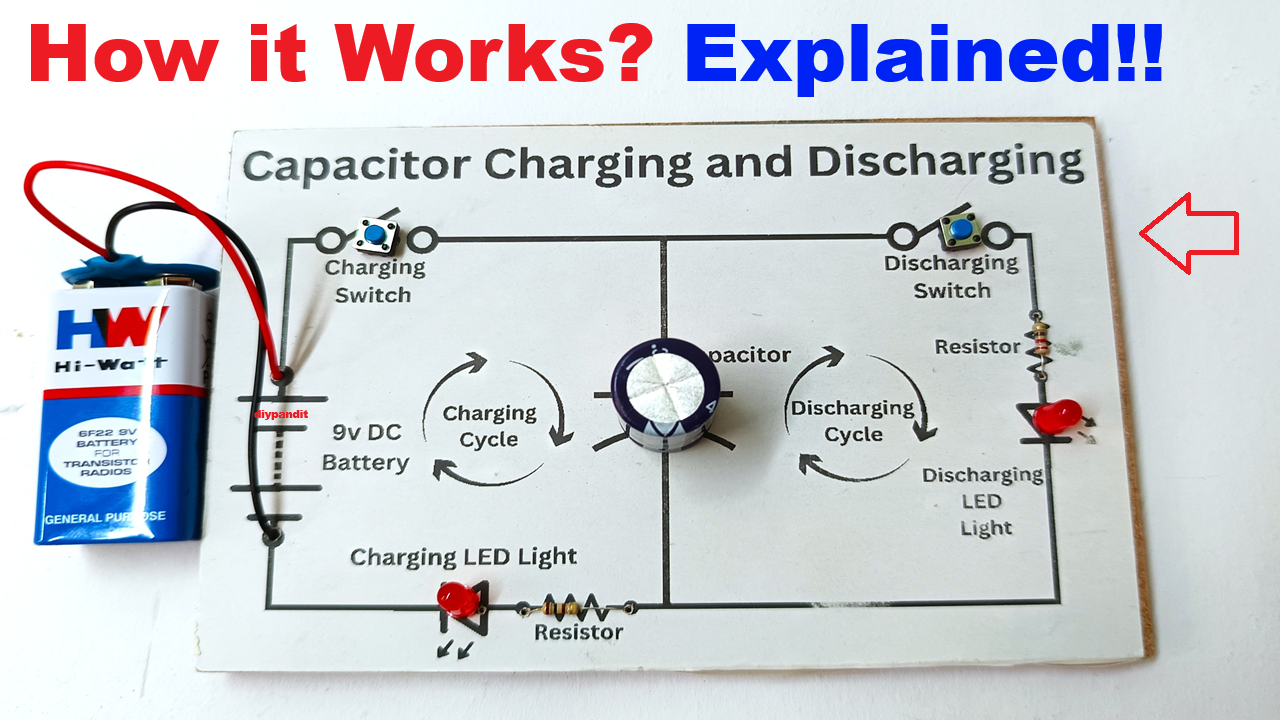Aim / Objective:
To demonstrate how a capacitor stores electrical energy during charging and releases it during discharging, showing its use in controlling and stabilizing electric current.

Materials Required:
- Breadboard or cardboard base
- Capacitor (100µF or 470µF)
- 9V battery or power source
- Resistor (1kΩ–10kΩ)
- LED light
- Connecting wires
- Switch (optional)
- Glue or tape for fixing components
Working Principle:
A capacitor is an electrical component that stores energy in the form of an electric field between two plates separated by an insulator (dielectric).
- When connected to a power source, the capacitor charges, storing electrons on one plate.
- When disconnected from the source and connected through a load (like an LED), it discharges, releasing the stored energy to power the load.
This shows the charging and discharging behavior of capacitors in electronic circuits.
Procedure:
- Mount all the components on the breadboard or cardboard base.
- Connect the capacitor, resistor, battery, and LED in series.
- Use a switch to control charging and discharging.
- When the switch is ON, current flows from the battery, and the capacitor charges.
- When the switch is OFF, disconnect the battery and connect the LED circuit — the capacitor discharges, lighting the LED briefly.
- Observe the LED glow pattern during charging and discharging.
Observation:
- During charging, the LED glows gradually brighter as the capacitor stores charge.
- After disconnecting the battery, the LED glows dimly for a short time due to the capacitor’s stored energy.
- The time for which the LED glows depends on the capacitor’s capacitance value and resistance in the circuit.
Conclusion:
This experiment shows that a capacitor can store and release electrical energy.
Capacitors are widely used in electronic devices for energy storage, filtering, timing circuits, and power supply stabilization.

